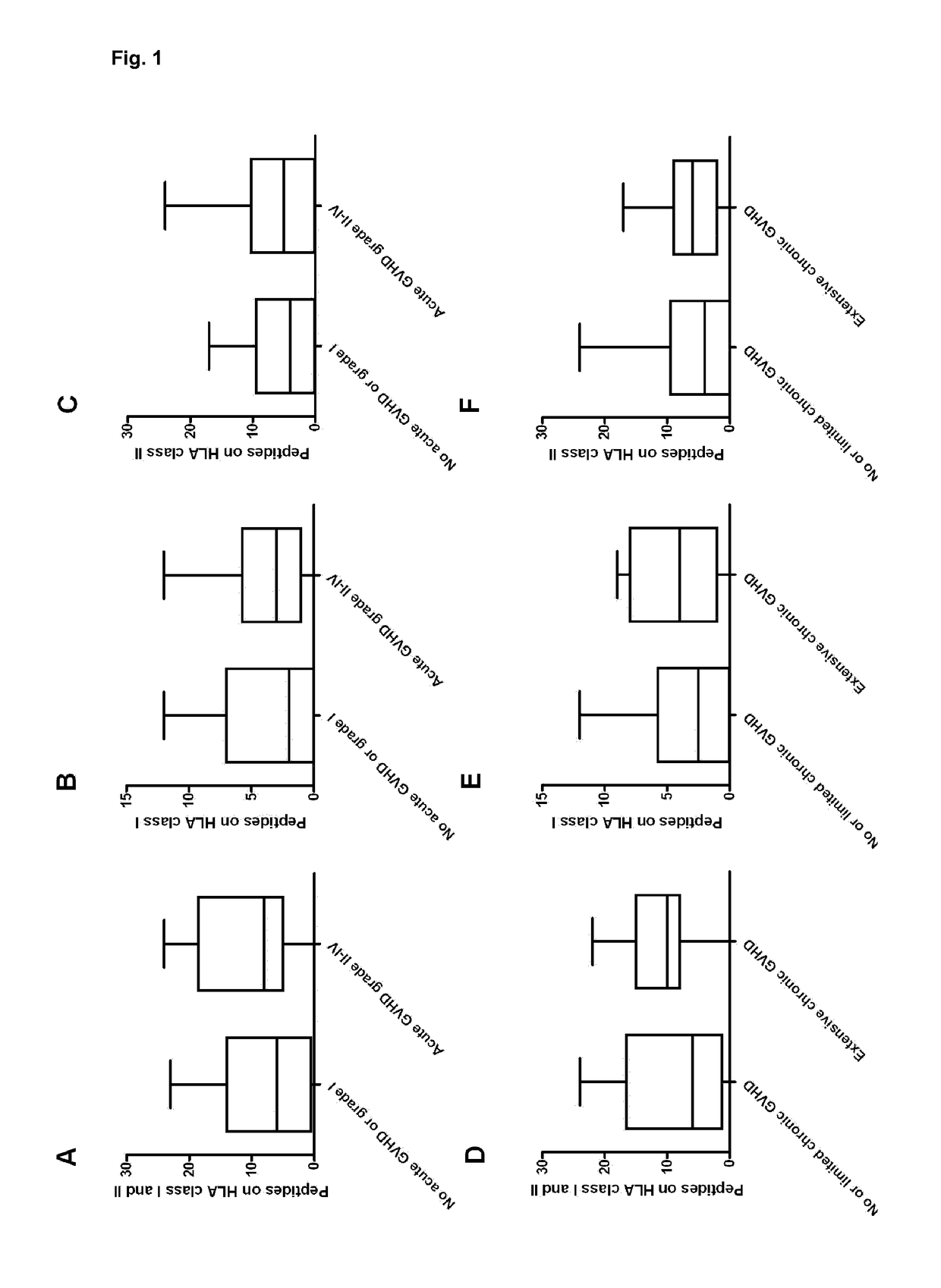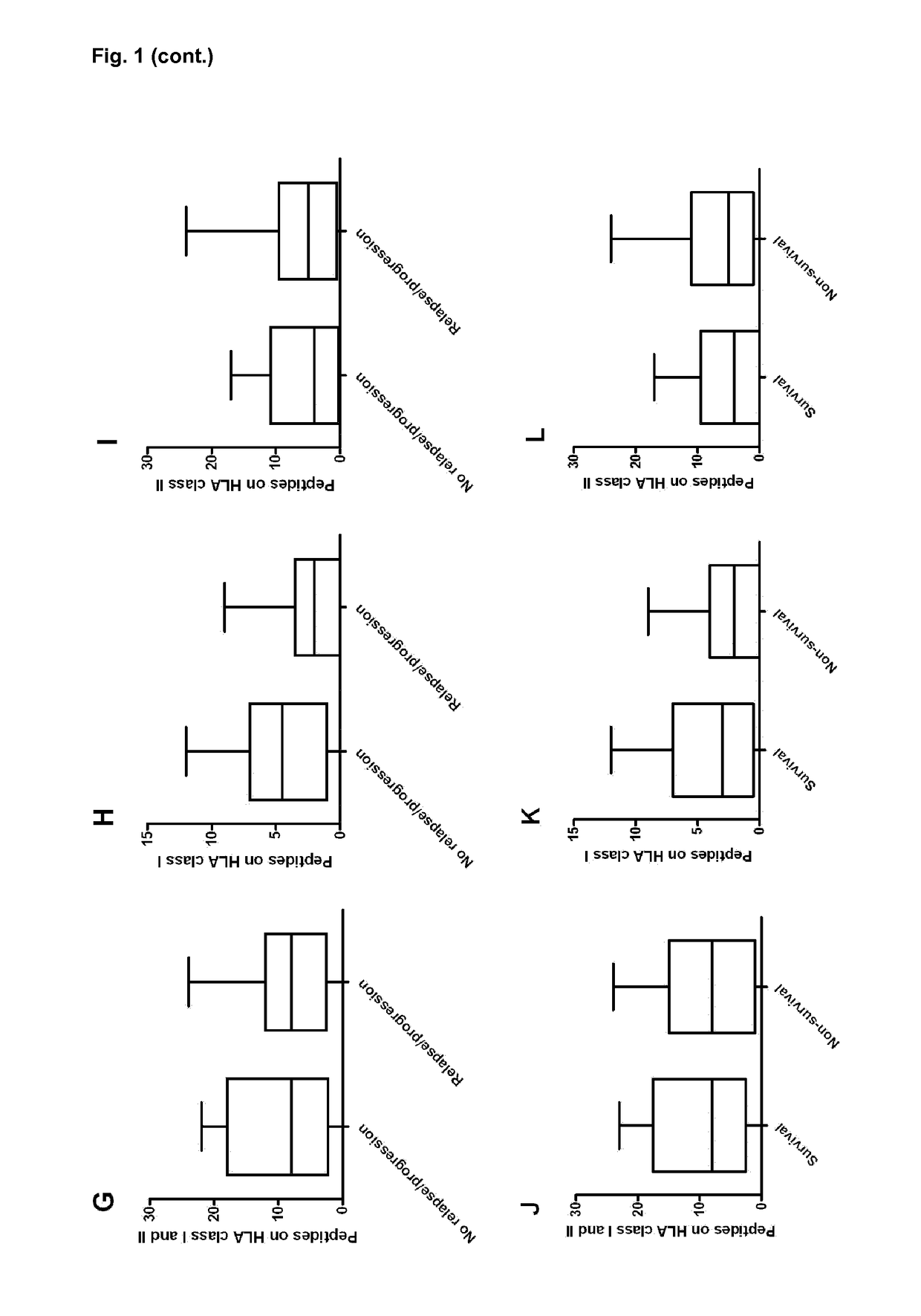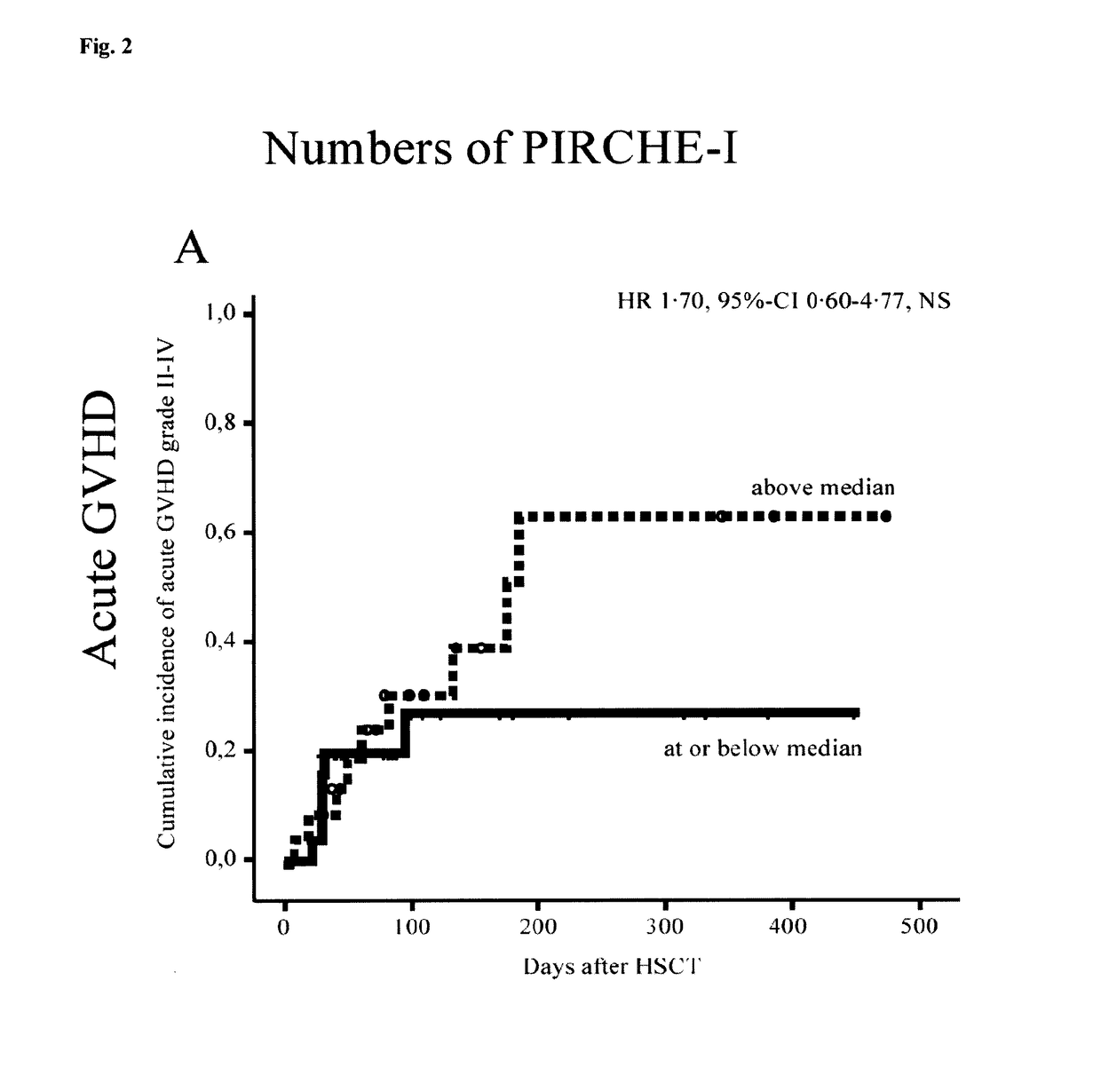Method for prediction of an immune response against mismatched human leukocyte antigens
a human leukocyte and immune response technology, applied in the field of immune response prediction against mismatched human leukocyte antigens, can solve the problems of unrecognized factors involved in predicting the inability to provide completely matched donors to approximately 40% of patients, and clinicians often face the difficult decision. , to achieve the effect of low risk of unwanted immune reaction, low risk of immune reaction, and fast and reliabl
- Summary
- Abstract
- Description
- Claims
- Application Information
AI Technical Summary
Benefits of technology
Problems solved by technology
Method used
Image
Examples
example 1
Risk of Alloreactivity after Mismatched-HSCT Increases with Increasing Numbers of Recipient-Specific HLA-Peptides Presented by Shared-HLA Molecules
Summary of Example 1:
[0139]Background: Graft-versus-host disease (GVHD) is one of the major limiting factors of hematopoietic stem-cell transplantation (HSCT). An established risk factor for GHVD is HSCT with an HLA-mismatched unrelated donor. Some mismatches appear to be more permissible, while others lead to an increased risk of developing GVHD. Currently, the biological basis for alloreactivity due to these non-permissible mismatches is unknown. The present example demonstrates use of a method to predict non-permissible mismatches and their association with the presentation of peptides derived from the recipient-specific mismatched-HLA molecules, by shared HLA to donor-T cells.
[0140]Methods: Retrospectively, 48 non-myeloablative conditioned patients, transplanted with a 9 / 10-matched unrelated donor, were analysed. HLA-typing was determ...
example 2
Predicted Indirectly ReCognizable HLA Epitopes Correlate with Chronic Graft-Versus-Host-Disease and Relapse-Related Mortality in Pediatric Patients after Cord Blood Transplantation
Background and Objectives:
[0168]Haematopoietic Stem-Cell Transplantation (HSCT) with an HLA-mismatched donor is a risk factor for Graft-Versus-Host Disease (GVHD). According to the present invention, graft-versus-host reactivity after HSCT with single HLA mismatched adult-unrelated donors can be predicted in advance. It is preferred that the number of peptides derived from the mismatched-HLA allele presented in matched HLA (Predicted Indirectly Recognized HLA Epitopes; PIRCHES) correlates to the development of alloreactivity. Since HLA mismatches are better tolerated in case of transplantation with Cord Blood (CB), CB donors are often selected with more than a single HLA mismatch. According to the present invention preferably the number of PIRCHES correlates to alloreactivity after CB transplantation.
Mater...
example 3
Predicted Indirectly Recognizable HLA Epitopes Presented by HLA-DRB1 Correlate with the De Novo Development of Donor-Specific HLA IgG Antibodies after Kidney Transplantation
[0171]The present invention provides methods for prediction of the role of T-helper cell epitopes derived from HLA class-I molecules presented by HLA class-II molecules from the recipient in the formation of donor-specific HLA antibodies of the IgG isotype. A role for the HLA-DRB1 molecule of the recipient in the formation of these antibodies has been suggested earlier. In Example 3 a large cohort of more than 800 kidney recipients is used. From this cohort, all non-immunized patients receiving their first kidney transplant are selected, followed by rejection and nefrectomy. The de novo production of donor-specific HLA class-I antibodies (DSA) is analyzed and correlated data the predicted indirectly recognizable HLA epitopes presented by HLA class II of the recipient (designated as PIRCHE-IIs). Despite the relati...
PUM
| Property | Measurement | Unit |
|---|---|---|
| follow-up time | aaaaa | aaaaa |
| length | aaaaa | aaaaa |
| amino-acid | aaaaa | aaaaa |
Abstract
Description
Claims
Application Information
 Login to View More
Login to View More - R&D
- Intellectual Property
- Life Sciences
- Materials
- Tech Scout
- Unparalleled Data Quality
- Higher Quality Content
- 60% Fewer Hallucinations
Browse by: Latest US Patents, China's latest patents, Technical Efficacy Thesaurus, Application Domain, Technology Topic, Popular Technical Reports.
© 2025 PatSnap. All rights reserved.Legal|Privacy policy|Modern Slavery Act Transparency Statement|Sitemap|About US| Contact US: help@patsnap.com



